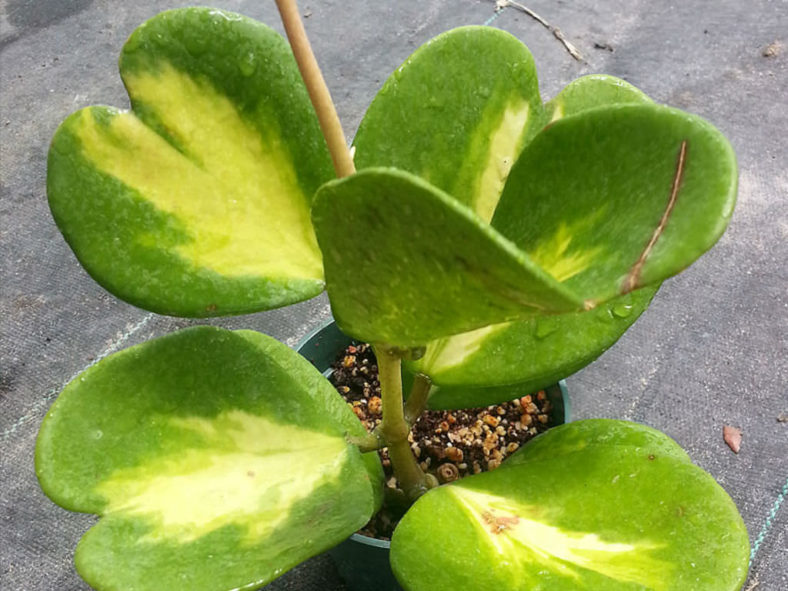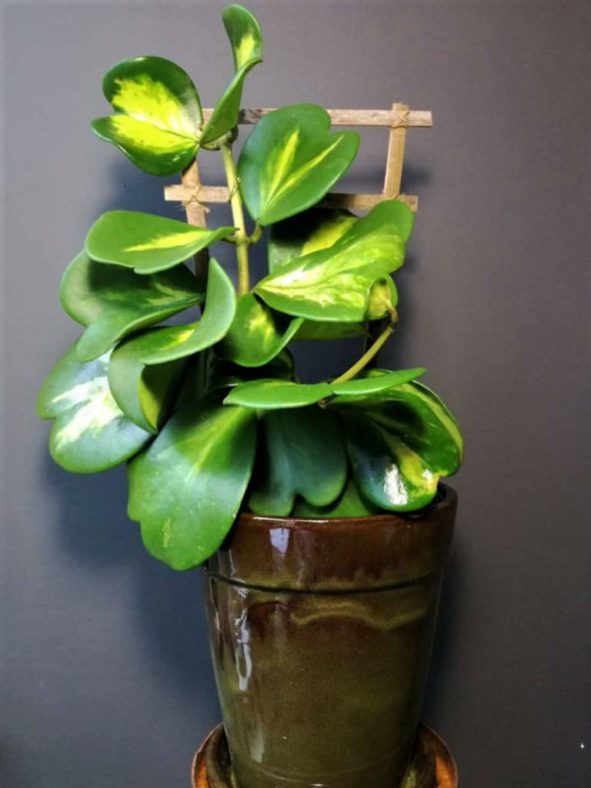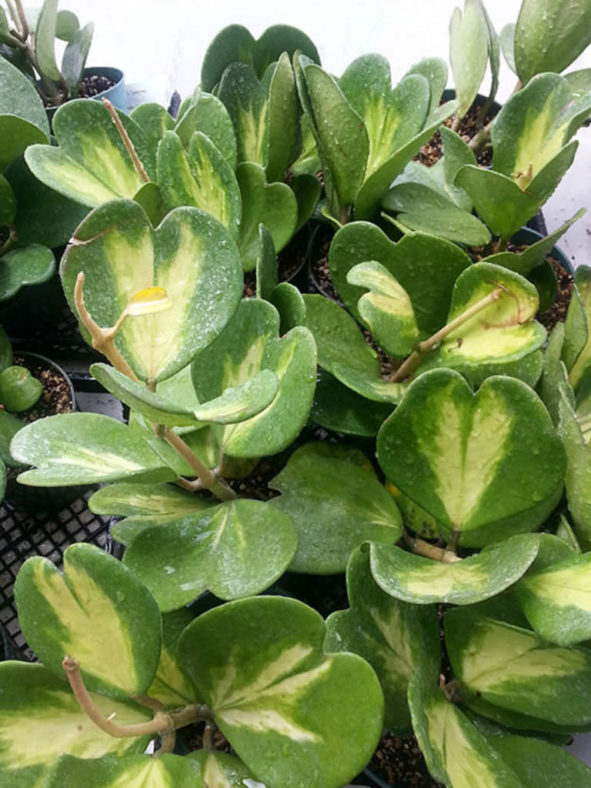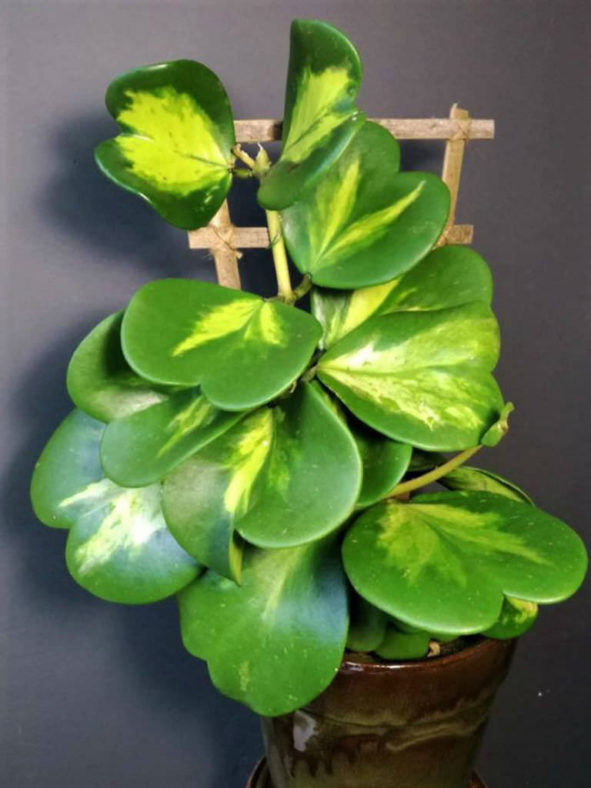Scientific Name
Hoya kerrii f. mediopicta
Accepted Scientific Name
Hoya kerrii Craib
Scientific Classification
Family: Apocynaceae
Subfamily: Asclepiadoideae
Tribe: Marsdenieae
Genus: Hoya
Origin
Hoya kerrii f. mediopicta is a variegated form of Hoya kerrii.
Description
Hoya kerrii f. mediopicta is an attractive, slow-growing, semi-succulent plant with bright green, heart-shaped leaves with creamy-yellow or white markings in the center. The leaves vary in the amount of variegation and can grow up to 4 inches (10 cm) long and 3 inches (7.5 cm) wide.
On the other hand, Hoya kerrii f. albomarginata has creamy-yellow or white markings on the edges.
This form is often sold as Hoya kerrii 'Reverse Variegata' or Hoya kerrii 'Inner Variegated'

Hardiness
USDA hardiness zones 11a to 11b: from 40°F (4.4°C) to 50°F (10°C).
How to Grow and Care
Hoyas don't ask for much beyond the well-draining soil and the warm, humid conditions many tropical flowers crave. They don't like wet feet or heavy soil, and many grow as epiphytes in nature. Give them at least a half-day of sunshine and bring them indoors when temperatures drop below 50°F (10°C).
When your Hoya finishes blooming, leave the flower stalk, as it may produce new flowers—removing the stalk forces the plant to produce a new stalk, which delays blooming and wastes energy. These plants are light feeders, and a monthly drink of compost tea or diluted fish emulsion provides all the nutrition these tropicals need. Hoyas like the security of a snug pot, and plants that are a bit root-bound will flower more prolifically than those swimming around in a giant pot.
Propagate Hoyas by cuttings of top growth or by leaf cuttings. The average cutting or leaf will produce a blooming plant in 2 years or less. The easiest method of propagation is by layering.
Learn more at How to Grow and Care for Hoya.
Links
- Back to genus Hoya
- Succupedia: Browse succulents by Scientific Name, Common Name, Genus, Family, USDA Hardiness Zone, Origin, or cacti by Genus
Photo Gallery
Click on a photo to see a larger version.


